In the first part of this blog post, we looked at one key idea about value propositions (Whose value?). This part of the blog post explores another key idea that flows from the first.
We tend to talk about “value proposition” in the singular, as if a school should have one universal message to promote. If, however, the value proposition is about what the prospective family values and how the school can deliver that, then it is important to recognize that not all prospective families value the same thing. For some of them, their top priority is a strong Catholic culture that instills church teachings and will help their kids maintain their Catholic faith. For many other parents, their top priority is strong academics, including a disciplined classroom environment and the development of good study habits. Other parents might be concerned about their children getting lost in a large public school, and they want a school where their kids will be known and can find ways to connect and belong, whether that is in the theater or on a sports team. Each of these segments of a school’s audience needs a value proposition that responds to what they value.
So schools develop a set of messages that respond to those varied parent priorities. The key question, though, is how those messages are imagined and presented.
 One way we can imagine them is like a photo collage. They all fit together, they are all shown at the same time. Some are a little larger, and you look at them first. Others are a little smaller, and get less of your attention. This might be how a school’s value proposition messages are communicated on the website or in the school’s printed materials. The first message is about faith, the second message is about academics, the third message is about community, the fourth message is about athletics, and so on. It’s an efficient way to communicate, but it’s not always completely effective. If a parent’s top priority is a connected community where their child will fit in and make friends, and the first and largest message is about religious instruction and the school’s authentic Catholic identity – or vice versa – then parents may not yet be convinced that this school is the right fit for them.
One way we can imagine them is like a photo collage. They all fit together, they are all shown at the same time. Some are a little larger, and you look at them first. Others are a little smaller, and get less of your attention. This might be how a school’s value proposition messages are communicated on the website or in the school’s printed materials. The first message is about faith, the second message is about academics, the third message is about community, the fourth message is about athletics, and so on. It’s an efficient way to communicate, but it’s not always completely effective. If a parent’s top priority is a connected community where their child will fit in and make friends, and the first and largest message is about religious instruction and the school’s authentic Catholic identity – or vice versa – then parents may not yet be convinced that this school is the right fit for them.
 A second way of thinking of the school’s value proposition messages is like the cards you hold in your hand when you are playing a game. You have six or seven cards, but each time it is your turn to play, you can pick the card that will be the best fit for that situation. This is how you can approach your value proposition messages when you have an interview and school tour. You have an assortment of authentic messages about your school to draw from, and you can pick the right two or three messages that are the most appropriate fit for that particular family. The key is to know what drives the decision-making of prospective parents, and the best way to find out is simply to ask them.
A second way of thinking of the school’s value proposition messages is like the cards you hold in your hand when you are playing a game. You have six or seven cards, but each time it is your turn to play, you can pick the card that will be the best fit for that situation. This is how you can approach your value proposition messages when you have an interview and school tour. You have an assortment of authentic messages about your school to draw from, and you can pick the right two or three messages that are the most appropriate fit for that particular family. The key is to know what drives the decision-making of prospective parents, and the best way to find out is simply to ask them.
The more a school can shift its thinking about its value proposition messages from the image of a static photo collage to the image of a set of cards, to be chosen strategically based on a particular family’s priorities, the better.

